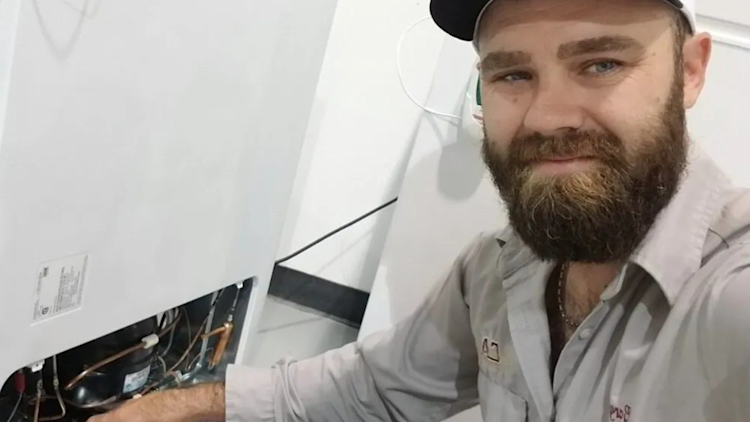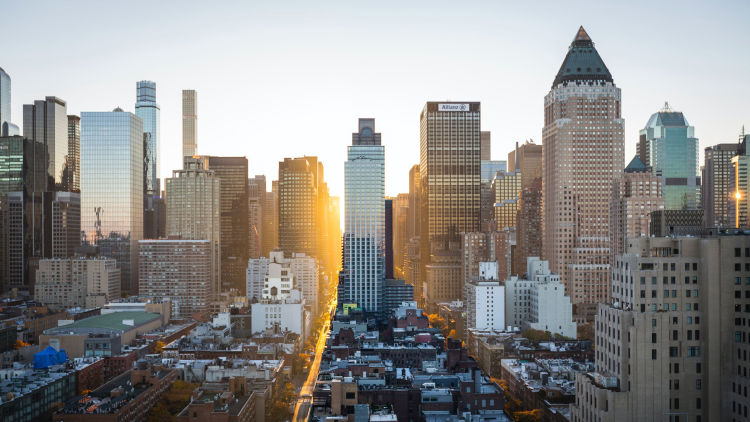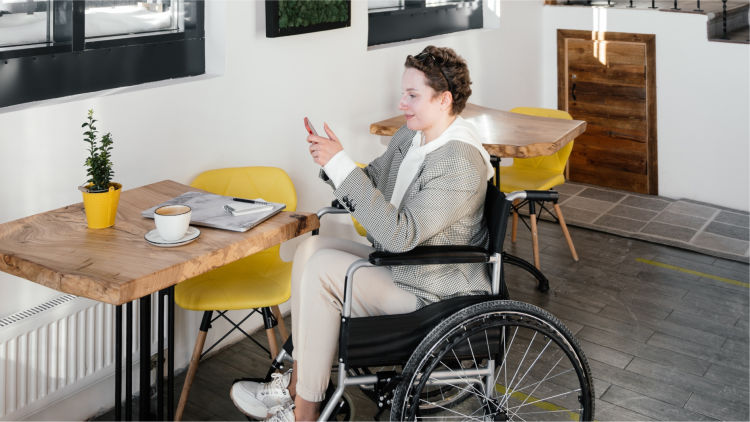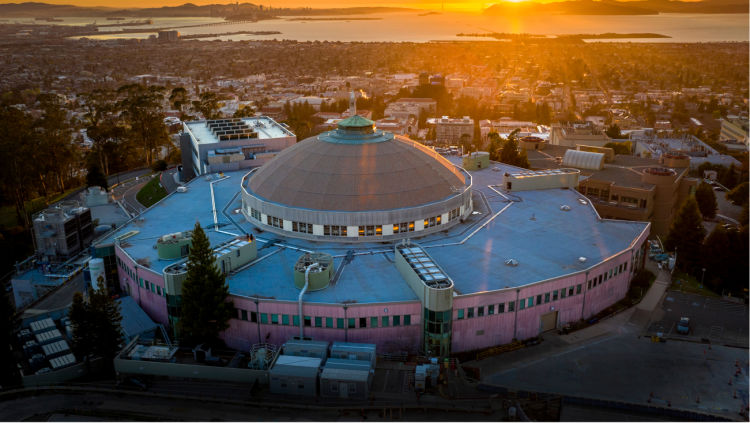The Story Behind Philip Cote’s Artwork for ecobee
A conversation with Indigenous artist Philip Cote III about the meaning behind his new painting for ecobee.
by ecobee on 06/21/2022 in Experts
6 min read
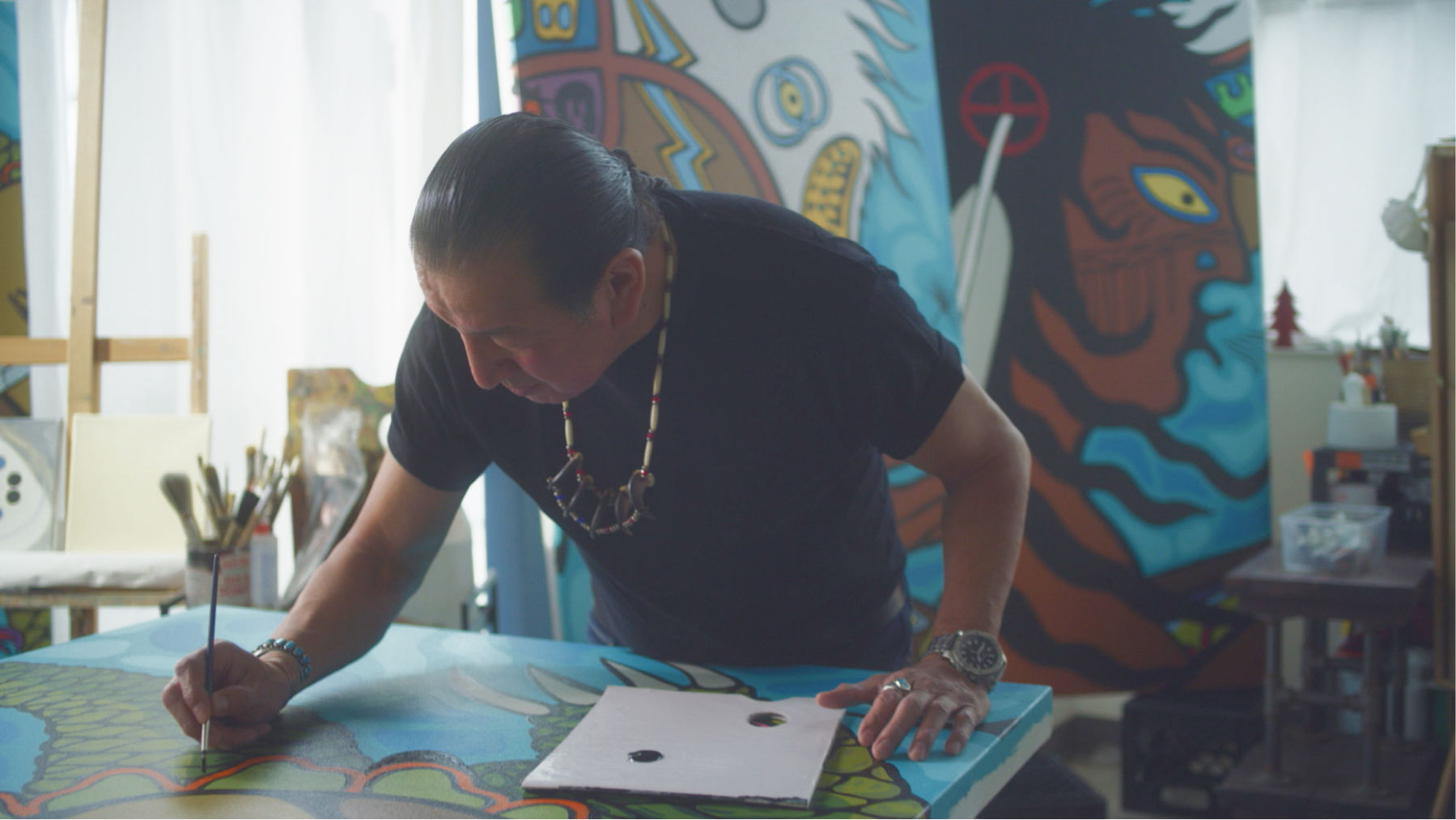
If you visit ecobee headquarters in Toronto, you may notice a beautiful new piece of art that welcomes visitors and employees at the reception desk. The artwork was created by Toronto-based Indigenous artist, storyteller, and wisdom keeper Philip Cote III from Moose Deer Point First Nation. Through his work, Cote explores new ways to imbue mural painting with oral traditions of storytelling and traditional spiritual perspectives.
In a recent engagement survey at ecobee, we heard that many employees had a desire to add elements to the office that further reflect our commitment to our planet positive mission, our diverse community, and the land our office is on in Toronto. ecobee’s office is on the traditional territory of many nations, including the Mississaugas of the Credit, the Anishnabeg, the Chippewa, the Haudenosaunee, and the Wendat peoples. Today, Toronto is home to many diverse First Nations, Inuit, and Métis peoples.
As a result, we engaged Cote to create a custom artwork that celebrates this and more. The goal of Cote’s work is to unearth and reveal his cultural experience and knowledge of Indigenous symbols, language, and teachings. We sat down with Cote to learn more about the painting he created for the ecobee office and its inspiration, the Seven Grandfather Teachings.
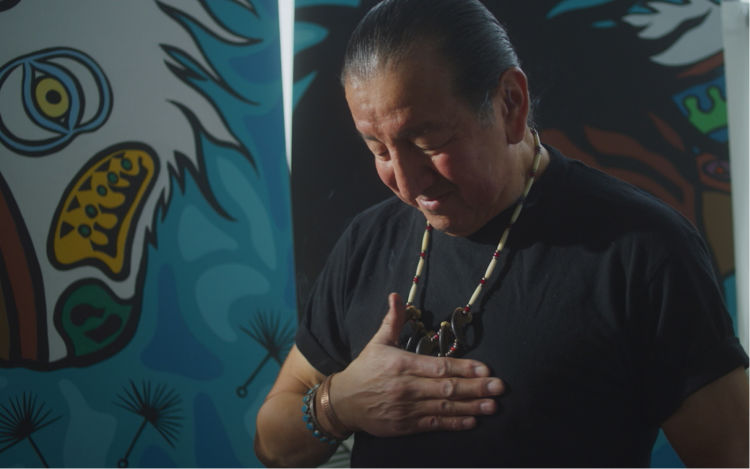
ecobee Citizen: Can you tell us more about the meaning behind the painting?
Cote: We are at the edge of a new world because Indigenous peoples’ stories are beginning to come out into the open. For a long time, our culture and history were hidden. So, for me, this mural is another step towards a positive future that includes Indigenous people, our thoughts, our ways, and our philosophies.
There’s a saying when it comes to Indigenous knowledge and history that refers to handing down knowledge from generation to generation from time immemorial. The mural itself is taking those same footsteps; a lot of what is in the mural speaks about passing down that knowledge from generation to generation. You can see that in the mural itself, looking at all of the animals and the Seven Grandfathers tradition. And also, the seven original clan members of the Anishnabeg and Ojibwe people that have been on this territory for a long time.
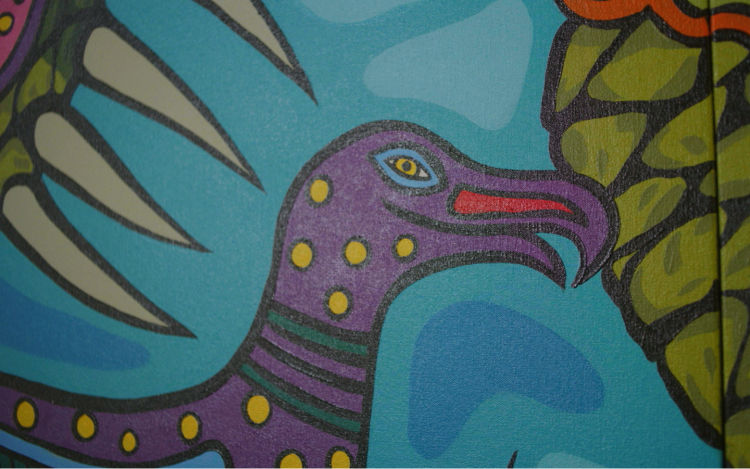
Cote: For me, these are all basic bits of knowledge, but even those kinds of things are elusive to most people in this country. But I know there are changes happening because I’m a part of those changes, because I deliver this kind of knowledge to schools and institutions of learning. I feel pleased to share these teachings through this mural for ecobee.
I would love for the mural to spark curiosity.
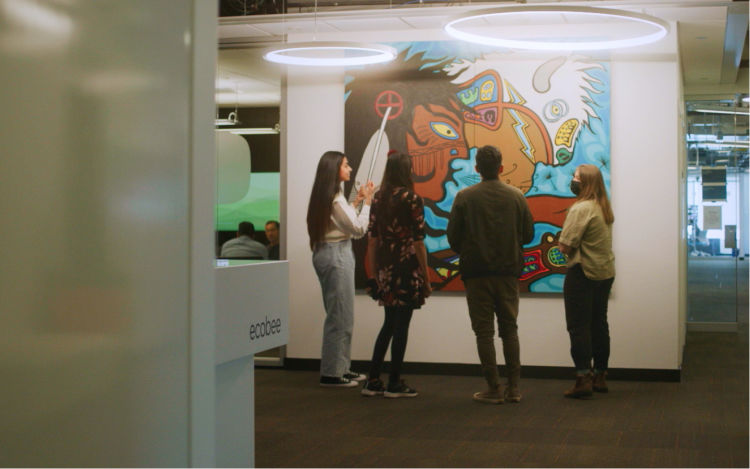
ecobee Citizen: You mentioned the Seven Grandfathers oral tradition. Can you tell us more about these teachings and how they come to bear and find representation in your artwork?
Cote: It’s a beautiful piece that has all of these bright colors. But when you look at it, you might not know the cosmology behind the piece right away. The Seven Grandfathers Teachings are throughout this mural: wisdom, love, respect, bravery, honesty, humility, and truth. These are really important words. But, more importantly, is how do you live by them? You integrate them into your life, and you begin to see what they mean as you travel through life.
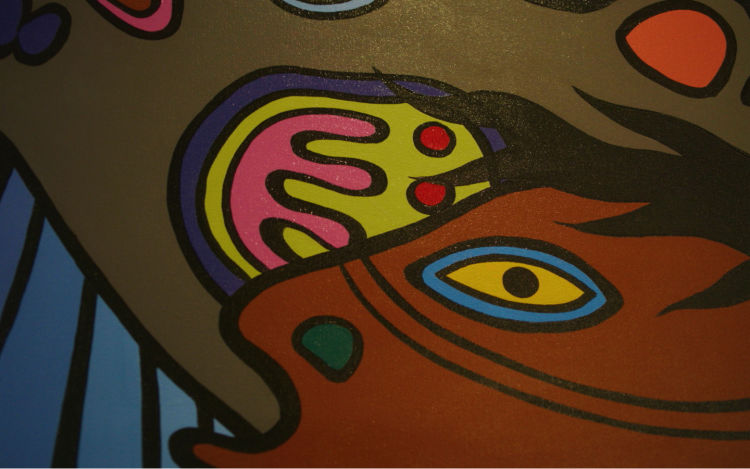
ecobee Citizen: The painting is full of vibrant colors, but there is also a thick black lining running through it. Could you tell us more about that?
Cote: The black line holds everything together. For us, that is the beginning of our Creation story. In the beginning, there was a great black void. And in that black void there was a Spirit. And that Spirit sent signals out across the universe to see who else was here and when there was no response, the Spirit called the signals back and said, as you come back to me, create light in the universe. And at that moment, all the stars were born, and from all those stars, planets began to form, until a planet that could hold life, and that is where we come into the picture.
But more importantly, that great black void is the essence of our cosmology. Because it is that Spirit that called the physical world into being. So, when that Spirit said make light in the universe, that is when all the stars were born. That is when the physical world came into existence.

The message of the mural is about passing down this kind of knowledge from generation to generation.
Cote: Everything in the universe is made of light and dark. Everything we look at has a spirit in it and has a balance and harmony. Our journey through life is about traveling between these two worlds of light and dark, of spirit and physical.
The message of the mural is about passing down this kind of knowledge from generation to generation. And it's not specifically just for Indigenous people. It's for all people. Anybody who has an open mind, and can hear what I'm saying, will understand its importance.
ecobee Citizen: What impact do you hope the mural has on people?
Cote: I would love for the mural to spark curiosity. It’s an introduction to the Indigenous world. It’s an invitation for people to be curious and ask questions. Heart thinking is what they call this. A lot of people think about love on a certain level and it’s usually a childish, romantic version of love. But Indigenous people, when they say heart thinking, they’re talking about the love that will go on for generations. They’re talking about making changes that are going to be a legacy. And I think that the work that ecobee does is about that long-term thinking, and it is that heart thinking, about saving the future. Miigwech.
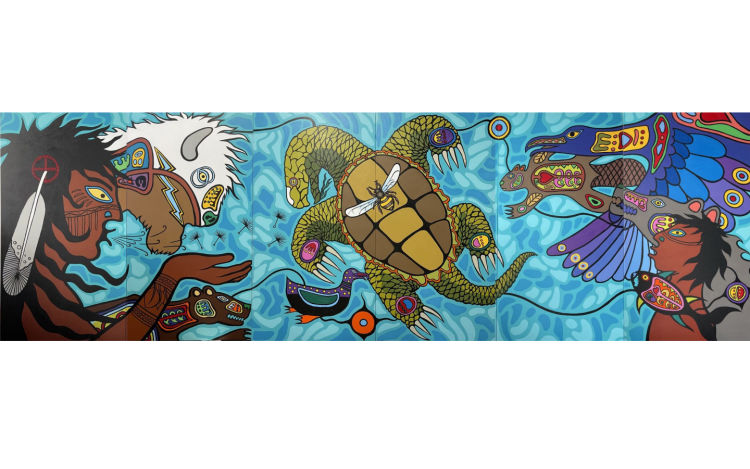
We are so grateful to Philip Cote for not only creating a beautiful piece of art that fills our office with color, but for also sharing the story behind the painting and its true meaning that connects us to the natural world and the Seven Grandfather Teachings. To learn more about Cote and the painting, watch the video below.
About Philip.
Cote is an Indigenous (Shawnee, Lakota, Potawatomi, Ojibwe, Algonquin and Mohawk) artist from Moose Deer Point First Nation. He is also a Sundancer, Pipe Carrier, and Sweat Ceremony leader recognized by Elder Vern Harper and Floyd Looks for Buffalo Hand. Cote received his Indigenous name Noodjmowin (The Healer) in 1979 from Joe Couture and was made a member of the False Face Society at the Seneca longhouse in 1992. Cote’s intent is to bring accuracy to the colonial archives through new research via archival and lived cultural practice and deep understanding of cultural symbolism. A graduate of OCAD University’s Interdisciplinary Art Media and Design Masters program in 2015, Cote has been exploring new ways to imbue mural painting with oral traditions of storytelling and with traditional spiritual perspectives.
Did you enjoy this article?
Thanks for letting us know!

